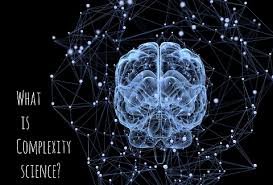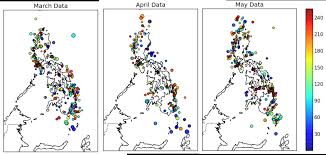Complexity: An Introduction
The past was so simple. Life was so simple and good. Those were the good old days. How often have you heard these ruminations? It is fairly common! Surprisingly, as we forge a path into the future, these ruminations gather pace. We become nostalgic and we thus rake fear of the future. We attribute a good life to a simple life. But the simple life is measured against the past. In fact, our modus operandi is to chunk up the past into timeboxes and then surface all the positive elements. While that is an endeavor that might give us some respite from what is happening today, the fact is that the nostalgia is largely grounded in fiction. It would be foolish to recall the best elements and compare it to what we see emerging today which conflates good and bad. We are wired for survival: If we have survived into the present, it makes for a good argument perhaps that the conditions that led to our survival today can only be due to a constellation of good factors that far outweighed the bad. But when we look into the future rife with uncertainty, we create this rather dystopian world – a world of gloom and doom and then we wonder: why are we so stressed? Soon we engage in a vicious cycle of thought and our actions are governed by the thought. You have heard – Hope for the best and plan for the worst. Really? I would imagine that when one hopes for the best and the facts do not undermine the trend, would it not be better to hope for the best and plan for the best. It is true that things might not work out as planned but ought we to always build out models and frameworks to counter that possibility. We say that the world is complex and that the complexity forces us to establish certain heuristics to navigate the plenar forces of complexity. So let us understand what complexity is. What does it mean? And with our new understanding of complexity through the course of this chapter, would we perhaps arrive at a different mindset that speaks of optimism and innovation. We will certainly not settle that matter at the end of this chapter, but we hope that we will surface enough questions, so you can reflect upon where we are and where we are going in a more judicious manner – a manner grounded on facts and values. Let us now begin our journey!

The sky is blue. We hear this statement. It is a simple statement. There is a noun, a verb and an adjective. In the English-speaking world, we can only agree on what constitutes the “sky”. We might have a hard time defining it – Merriam Webster defines the sky as the upper atmosphere or expanse of space that constitutes an apparent great vault or arch over the earth. A five-year-old would point to the sky to define sky. Now how do we define blue. A primary color between green and violet. Is that how you think about blue or do you just arrive at an understanding of what that color means. Once again, a five-year-old would identify blue: she would not look at green and violet as constituent colors. The statement – The sky is blue – for the sake of argument is fairly simple!
However, if we say that the sky is a shade of blue, we introduce an element of ambiguity, don’t we? Is it dark blue, light blue, sky blue (so we get into recursive thinking), or some other property that is bluish but not quite blue. What has emerged thus is an element of complexity – a new variable that might be considered a slider on a scale. How we slide our understanding is determined by our experience, our perception or even our wishful thinking. The point being that complexity ceases to be purely an objective property. Rather it is an emergent property driven by our interpretation. Protagoras, an ancient Greek philosopher, says that the man is a measure of all things. What he is saying is that our lens of evaluation is purely predicated on our experiences in life. There is nothing that exists outside the boundaries of our experience. Now Socrates arrived at a different view – namely, he proved that certain elements are ordered in a manner that exists outside the boundaries of our experience. We will get back to this in later chapters. The point being that complexity is an emergent phenomenon that occurs due to our interpretation. Natural scientists will argue, like Socrates, that there are complex systems that exist despite our interpretations. And that is true as well. So how do we balance these opposing views at the same time: is that a sign of insanity? Well, that is a very complex question (excuse my pun) and so we need to further expand on the term Complexity.
In order to define complexity, let us now break this up a bit further. Complex systems have multiple variables: these variables interact with each other; these variables might be subject to interpretation in the human condition; if not, these variables interact in a manner to enable emergent properties which might have a life of its own. These complex systems might be decentralized and have information processing pathways outside the lens of science and human perception. The complex systems are malleable and adaptive.
Markets are complex institution. When we try to centralize the market, then we take a position that we feel we understand the complexity and thus can determine the outcomes in a certain way. Socialist governments have long tried to manage markets but have not been successful. Nobel winner, Frederich Hayek, has long argued that the markets are a result of spontaneous order and not design. It has multiple variables, significant information processing is underway at any given time in an active market, and the market adapts to the information processing mechanism. But there are winners and losers in a market as well. Why? Because each of them observes the market dynamics and arrive at different conclusions. Complexity does not follow a deterministic path. Neither does the market and we have lot of success and failures that suggest that to be the case.

Let us look at another example. Examples will probably give us an appreciation for the concept and this will be very important as we sped through the journey into the future.
Insect behavior is a case in point. Whether we look at bees or ants, it is a common fact that these insects have extremely complex systems despite the lack of sufficient instruments for survival for one bee or one ant. In 1705, Bernard Mandeville wrote a book called: Fable of the Bees. It was a poem. Here is a part of the poem. What Mandeville is clearly hinting at is the fact that there would be an innate failure to centralize complex systems like a bee hive. Rather, the complex systems emerge in a way to create innate systems that stabilize for success and survival in the long run.
A Spacious Hive well stock’d with Bees,
That lived in Luxury and Ease;
And yet as fam’d for Laws and Arms,
As yielding large and early Swarms;
Was counted the great Nursery
Of Sciences and Industry.
No Bees had better Government,
More Fickleness, or less Content.
They were not Slaves to Tyranny,
Nor ruled by wild Democracy;
But Kings, that could not wrong, because
Their Power was circumscrib’d by Laws.
Then we have the ant colonies. An ant is blind. Yet a colony has collective intelligence. The ants work together, despite individual shortcomings that challenge an individual survival, to figure out how to exist and propagate as group. How does a simple living organism that is subject to the whims and fancies of nature survive and seed every corner of the earth in great volumes? Entomologists and social scientists and biologists have tried to figure this out and have posited a lot of theories. The point is that complex systems are not bounded by our reason alone. The whole is greater than the sum of the parts.
Key Takeaway
A complex system is the result of the interaction of a network of variables that gives rise to collective behavior, information processing and self-learning and adaptive system that does not completely lie in the purview of human explanation.
Posted on December 6, 2018, in Employee Engagement. Bookmark the permalink. Comments Off on Complexity: An Introduction.